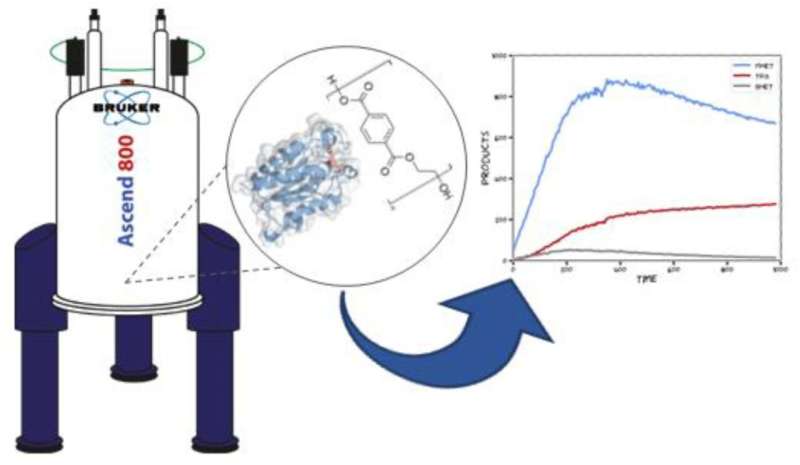Enzymes from bacteria and fungi break down plastic

Every year, the world produces 380 million tons of plastic. A lot of it ends up in nature and stays there for a long time. It can take 450 years to break down a plastic bottle.
"Plastic is a synthetic material that is challenging to break down," says Gaston Courtade, an associate professor at NTNU's Department of Biotechnology and Food Science.
Plastic is found in packaging, toys, decorative items—well, in most categories of products.
"We need technology that enables plastics to be broken down more efficiently to achieve a more sustainable future," says Courtade.
Finding enzymes that break down plastic
The researchers and students in biotechnology at NTNU have now come a few steps closer to producing enzymes that can break down plastic in an efficient way.
Enzymes are substances that speed up chemical processes without breaking down themselves—like is being done to break down plastic. Courtade is heading the study, and the research team has already come a long way.
"We want to understand the reactions behind the enzymes that can break down plastic," says Courtade.
The aim is to use enzymes from bacteria and fungi and improve their ability to break down plastic faster.
One challenge is how well these enzymes can bind to plastic. The researchers are therefore looking at ways to use proteins with special binding properties to regulate how the enzymes attach to plastic.
Enzymes only part of the solution
However, the danger in this is that more people might then think that it's no problem to use plastic.
"We hope this doesn't lead to more people thinking it's okay to produce more plastic simply because we now have a better way to break down the plastic with the enzymes," says Courtade.
"We'd rather have our research contribute to producing more sustainable by-products," he says. "We need to become less dependent on plastics from fossil sources and get better at investing in biotechnological solutions."
The findings are published on the bioRxiv preprint server.
More information: Kristina Naasen Hellesnes et al, Biochemical characterization and NMR study of a PET-hydrolyzing cutinase fromFusarium solani pisi, bioRxiv (2022). DOI: 10.1101/2022.11.01.514593
Provided by Norwegian University of Science and Technology New enzyme discovery is another leap towards beating plastic waste
No comments:
Post a Comment